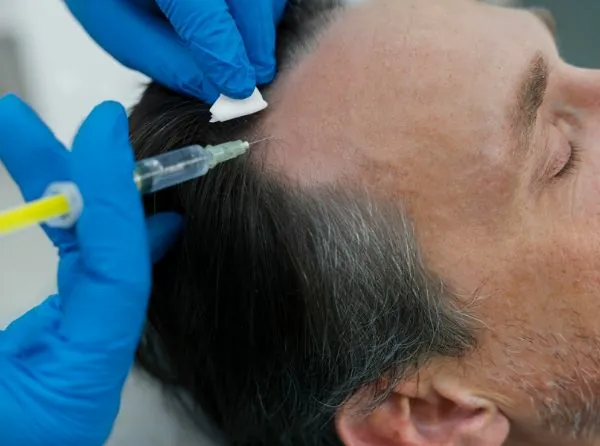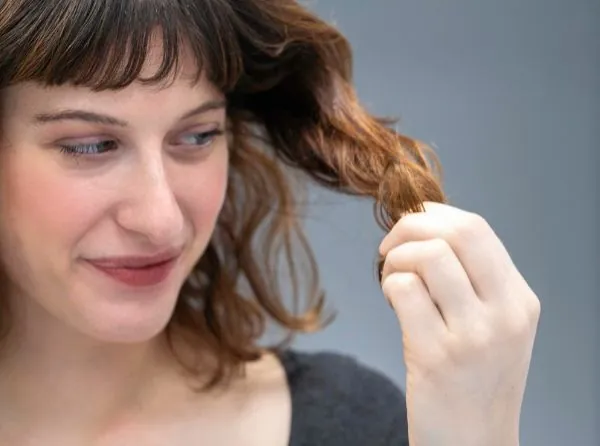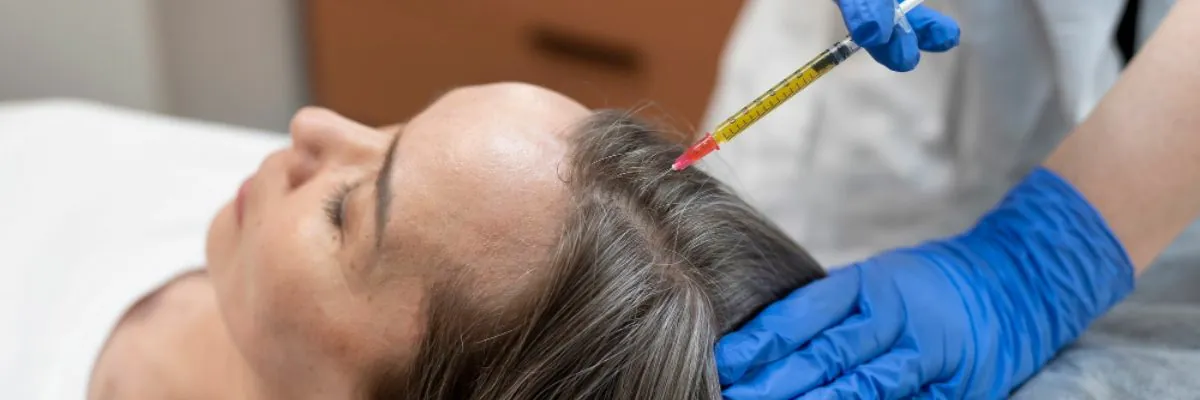Platelet Rich Plasma, also known as PRP, is a treatment that is becoming increasingly popular for hair growth. This innovative therapy uses the patient’s own platelets to stimulate and promote hair growth. In this post, we will delve into what PRP offers, its effectiveness, who it is for, the number of sessions needed, when you can expect to see results, and the potential side effects.
What does it do for hair loss?
Platelet Rich Plasma (PRP) therapy offers a promising solution for addressing hair loss. PRP contains various growth factors and cytokines that stimulate the growth of hair follicles, initiating the anagen phase of the hair cycle. This results in longer and thicker hair, as well as improved thickness and density due to enhanced cell regeneration and increased blood flow to the follicles. PRP also aids in repairing damaged hair follicles and promoting new hair growth.
Additionally, PRP therapy has been found to reduce inflammation, which is crucial for maintaining a healthy scalp environment conducive to hair growth. By strengthening and nourishing the hair follicles, PRP reduces hair loss and prevents further thinning, ultimately improving the overall quality of the hair.Moreover, PRP has demonstrated efficacy in reducing hair loss associated with medical conditions like alopecia areata. A study examining the effects of PRP on hair growth revealed promising results: after three PRP sessions, participants experienced an average increase in hair density of 22%, with 80% reporting a significant reduction in hair loss.

Benefits of Platelet Rich Plasma
PRP therapy stands out as an attractive option for hair loss treatment due to its various advantages:
- Natural and safe: PRP is derived from the patient’s own blood, eliminating the need for artificial substances or medications and ensuring a safe and minimally invasive procedure.
- Effective: Numerous studies have provided evidence of PRP’s ability to significantly improve hair density and thickness in individuals experiencing hair loss.
- Short recovery time: PRP treatment requires minimal downtime, allowing patients to resume their regular activities immediately after the procedure.
- Long-term results: While individual responses may vary, most individuals typically experience progressive hair regrowth over time with PRP therapy.
Tips against hair loss
While PRP therapy can be effective in treating hair loss, it is essential to adopt healthy habits to maintain and promote healthy hair. Here are some tips to consider:
- Avoid excessive heat and chemical treatments: Limit the use of hair dryers, curling irons, and straighteners, as they can damage the hair shaft. Avoid harsh chemical treatments and dyes.
- Maintain a balanced diet: Ensure your diet includes a variety of foods rich in vitamins, minerals, and antioxidants, such as fruits, vegetables, and lean proteins. Proper nutrition is vital for supporting healthy hair growth and strength.
- Manage stress: Chronic stress can contribute to hair loss. Engage in stress-reducing activities such as exercise, meditation, or yoga to help manage stress levels effectively.
- Regular exercise: Engaging in physical activity on a regular basis not only improves overall health but also enhances blood circulation and nutrient delivery to the scalp, thereby promoting hair growth. Aim for at least 150 minutes of moderate-intensity exercise per week.
Who can benefit from PRP therapy for hair growth?
PRP is suitable for both men and women experiencing hair loss. It is particularly beneficial for individuals who are in the early stages of hair loss or have thinning hair. PRP can help to reverse hair loss and stimulate new hair growth. By stimulating the hair follicles and promoting blood circulation to the scalp, PRP can help to thicken and strengthen thinning hair, resulting in a fuller and healthier-looking head of hair.

There is no set number of sessions that are required for PRP therapy, and it can vary from person to person. Typically, individuals require a series of three to four sessions, spaced four to six weeks apart. This is because PRP therapy takes time to work, and each session only provides a temporary solution. The spacing of the sessions allows the treatment to be more effective, as the body has time to heal and adjust to the changes. However, some individuals may require more or less depending on the severity of their hair loss and their individual response to the treatment.
When can you expect results from PRP therapy for hair growth?
- Results from PRP therapy are typically seen around three months after the final treatment session. However, it can take up to six months or more to see the full effects of PRP therapy.
- According to a clinical study on the effectiveness of PRP therapy for hair growth, researchers found that 88% of participants experienced an increase in hair count after receiving PRP treatment. Furthermore, the study reported that the average increase in hair count was 43% after three PRP sessions. These findings provide strong evidence for the efficacy of PRP therapy in promoting hair growth and achieving positive results in individuals with hair loss.
- It is important to be patient and give the treatment time to work its magic!
PRP aftercare
After receiving PRP therapy, it is important to follow some simple aftercare guidelines:
- Avoid heat and sun exposure: Avoid excessive heat, including hot showers, saunas, and excessive sun exposure, for at least 48 hours after the procedure.
- Avoid physical contact: Avoid touching or rubbing the scalp, as it may cause irritation or infection.
- Follow hair care routine: Continue with your normal hair care routine, but avoid shampoos and conditioners that contain harsh chemicals.
- Regularly consult your doctor: Schedule follow-up appointments with your doctor to monitor your progress and address any concerns.
By following these aftercare steps, you can enhance the results and optimize your experience with PRP therapy against hair loss.
PRP Therapy stands as a promising treatment against hair loss, offering patients a natural and effective solution to address this common concern. As we’ve explored, PRP Therapy harnesses the body’s own healing mechanisms to stimulate hair follicle growth and improve overall hair health. However, it’s essential to remember that each individual’s situation is unique, and consulting with a healthcare professional is crucial to determine the most suitable course of action.



